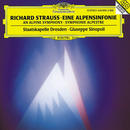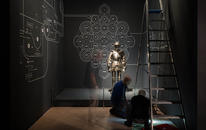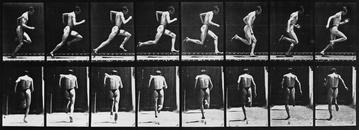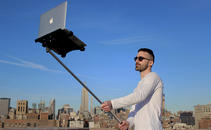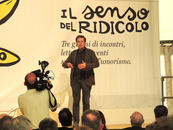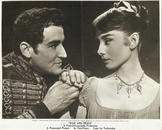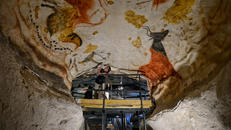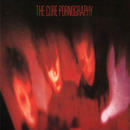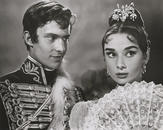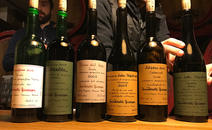Stupidity is a serious matter
The need for visual consumption
I always love to study the European cultural scene between the nineteenth and twentieth centuries, a crazy era that ended in an even crazier era, the Great War. Fond of the music from that period (particularly that of Richard Strauss and Gustav Mahler) I understood, thanks to the lessons of Oreste Bossini, that the symphonic poem, the most popular musical form of the time, is a real imaginative journey. Take, for example, Alpensinfonie (the Alpine Symphony): an immersion of the senses that generates a real "vision" of the places described by musical notes and the terse, essential trace of the poem. It’s revelatory to study the various artistic phenomena linked to cultural image that developed around the second half of the nineteenth century, the proliferation of situations in which the visual appearance invaded the scope of other idioms. It was an unstoppable wave, as if society felt a growing need for visual consumption, a cultural demand that ultimately resulted in the invention of the cinema, which marked the turning point of a visual cultural metamorphosis. The only precedent being the invention of the printing press.
What do we see today?
Paola Mastrocola, Italian author, asks a question that apparently seems stupid, but is not in the least: What do we see today? Based on her experience visiting an exhibition entitled “Orlando furioso 500 anni. Cosa vedeva Ariosto quando chiudeva gli occhi,” (500 years of Orlando Furioso. What Ariosto saw with closed eyes), Mastrocola pointed out just how influenced se are by our surroundings or works such as paintings, sculptures, buildings, carvings, tapestries, weapons, jewelry (what Ariosto might have seen) and skyscrapers, bridges, highways, supermarkets, TV dramas, talk shows, installations, film, videos on WhatsApp, news, festivals, chocolate fairs (all things we see today). She concludes by underlining that we are permeated with words and pictures, stuffed like sandwiches, deafened by daily noise, in short, saturated by our time (as Ariosto was his). This is why Ariosto created Orlando Furioso and we can no longer understand it. It’s no longer a question of semantics, but imagination. It all depends on what we have around us, from what we see every day and what our mind sees behind closed eyes (I think it also depends on the sounds we feel echo, even in quiet moments).
The current iconocracy
Anna Li Vigni, Italian art history professor, recently elucidated a concept that I have long wanted to clarify for myself. (I generally can only find clarification slowly, reading and writing, as in the old days.) I can summarize it in a few lapidary words: we are in the middle an "iconic turning point" that is shaping a new age in which the cultural primacy of the written language will be replaced by images. Visual culture starts from the premise of non-distinction and manipulation. A painting, an ad campaign, war reporting, a selfie published on the web: all the images, without distinction, are projections of a certain look, with no real categories and all have equal value (at least before any consensus on the canonization on the web, in its virility), subject to interpretations and manipulations. We are immersed in a giant iconosphere that, thanks to the web, allows the continuous creation, transmission, sharing, enjoyment and manipulation of images of all kinds. Anna concludes that, in any case, our deep intentions and desire to be represented by an icon, we are not so different from the “pictor” man that, in the Upper Paleolithic era of the, drew animal figures in the caves of Lascaux.
Video clips and pornography
We are inundated with video clips. We receive them, we send them. We offer to make them for our clients, they request them. Clips, the world has become voracious for clips. We went passed from the thousands of pages of War and Peace, and the countless hours it takes to read them, to four hours of Gone with the Wind; from films lasting a canonical hour and a half, to the thirty-minute TV series; to arrive, panting, at clips lasting a few minutes, or seconds, like TV advertisements. Our ability to focus has shortened, it requires the rhythm that echoes in our heads. These clips prove that the fragmentary nature and the energy of what "seem real" dominate the iconic contemporary imagination. To be effective, the clips must use conventional language and clichés, but reworked a bit, to always seem new, but there is nothing new whatsoever. It’s a new area, but deep down it’s always a unique message associated with success, by acclamation or derision, the simplified version of comforting sarcasm. The need for radical realism, perhaps with a magical slant (even if it’s a little “fake”), satisfies our ego. It allows us to be a part of the story, an active part of the story, making it personal, yet universal thanks to the web. The question of spreading a message is no longer about the means used but the style. The style is that of the "show all" to point of being pornographic, in terms of aesthetics - radical realism with no sense of the ridiculous, spread without hesitation.
“Stupidity is a serious matter”
This is the title of a brilliant pamphlet by Maurizio Ferraris. Despite the imbecility (of others) often makes people laugh, we all know it’s a serious matter. We think that we suffer from the stupidity of others, especially with regards to our profession. But in this case the seriousness isn’t focused on the stupidity as such, but our own serious approach. This is something very serious: every one of us is an idiot, some more than others, especially those who believe never to be one. The other day I felt like the king of fools for a good half hour, standing in front of a bank manager. At the end of the conversation, he must have thought: What an idiot! (I actually read the expression on his face). And the remarkable thing is that that phrase was not derogatory: he thought and expressed it, with uninhibited expressions, with enhanced meaning and precision. It was an exact phrase. Maybe had the roles been reversed (me, not him, shedding light on a professional matter) I would have addressed him, mentally, in the exact same way. Since that day, I have been fool countless other times, I think, without even realizing it. We console ourselves, I do, the bank director does, you do, thinking that we are only stupid on very sporadic occasions. But Ferraris goes beyond, relentless. He states that the stupidity is the status quo of the history of mankind, and the flashes of intelligence and genius are nothing more than sporadic outages, so the opposite of what we tend to think. He continues, more and more relentless (and here he really caught my attention): it’s wrong to think of technology as a tool of alienation and corruption or of the truly magnificent essence of human nature. On the contrary, technology - the scapegoat throughout history - simply reveals the man for what he truly is: an imbecile. The more powerful and sophisticated the technique, the stronger the voice of stupidity is heard. Ferraris argues that the web is nothing other than a technological tool that records, documents and amplifies the huge mass stupidity. He admits that progress of any sort results from the mistakes of individual idiots (someone must have been the first to make the mistake of placing an electric fan on the edge of a bath tub) and concludes by appealing to the individual consciousness, stimulated by the sense of ridicule: we should try with all our might to refrain from our natural vocation of stupidity. But he also appeals to the culture, fortunately, considered the best antidote to our ruin (the largest dam built to buffer that immense sea of stupidity that is the human race) but also, potentially, the instrument for bringing stupidity, alas, at its highest level, to a climax.
22/03/2017 Filippo Maglione



